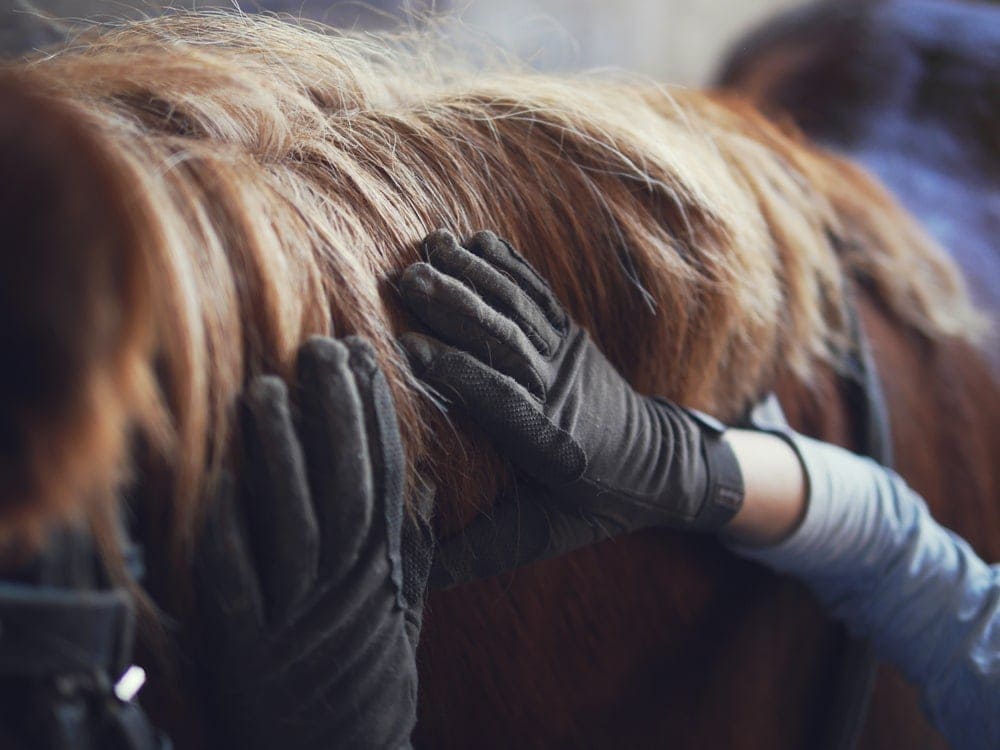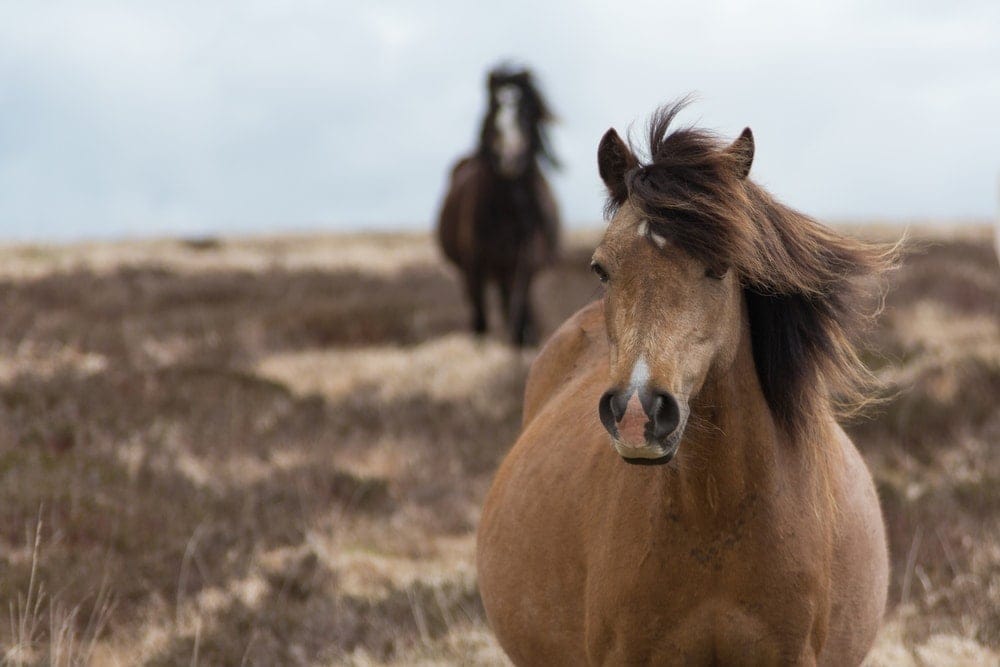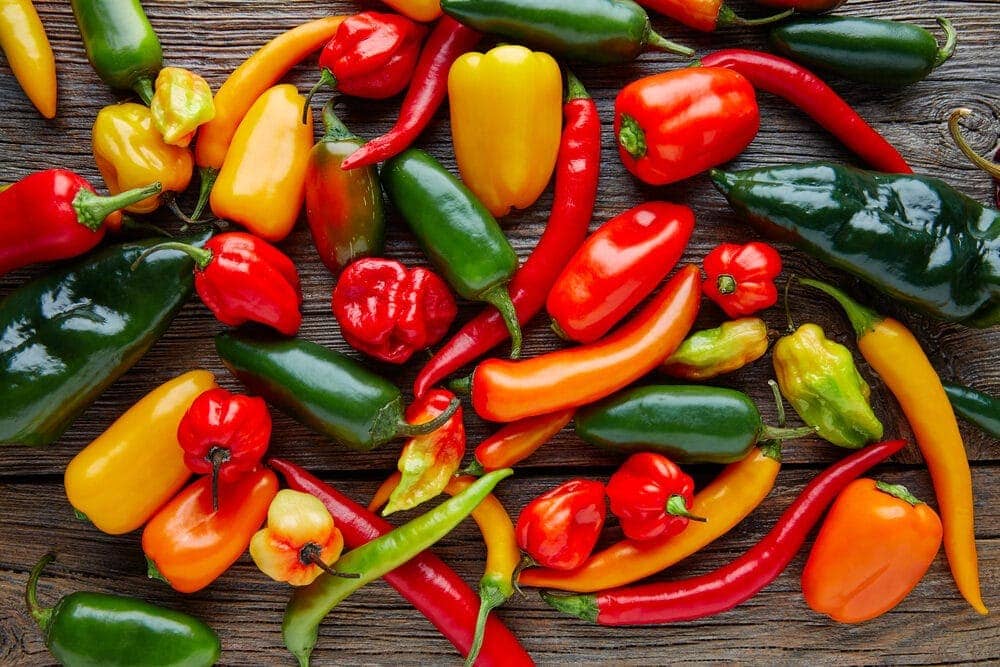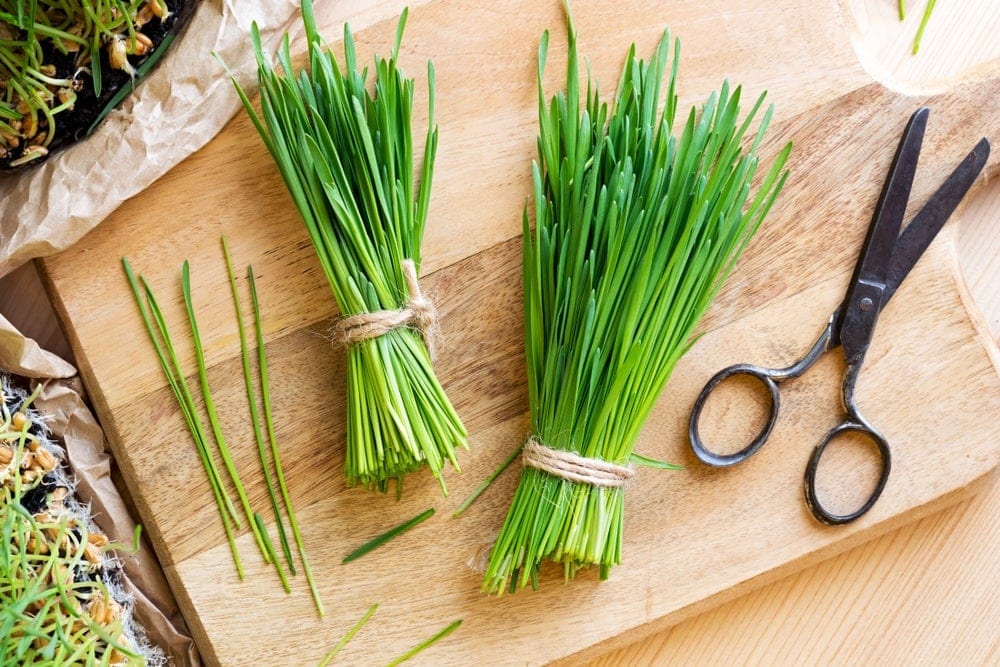As with any animal, you want to make sure that your horse does not accidentally ingest a poisonous plant.
Depending on how much they ingest of it, it may only make them sick but it could also kill them.
10 Poisonous Plants To Horses
In North America, there are hundreds of toxic plants but only a handful can do serious harm to a horse. Luckily, horses are pretty discerning so they usually will not bother with strange, bitter plants. It will take several leaves to impact a thousand-pound horse. Some are very dangerous because of their potency. Repeated grazing of these plants can build up over time and lead to a catastrophe.
1. Bracken Fern
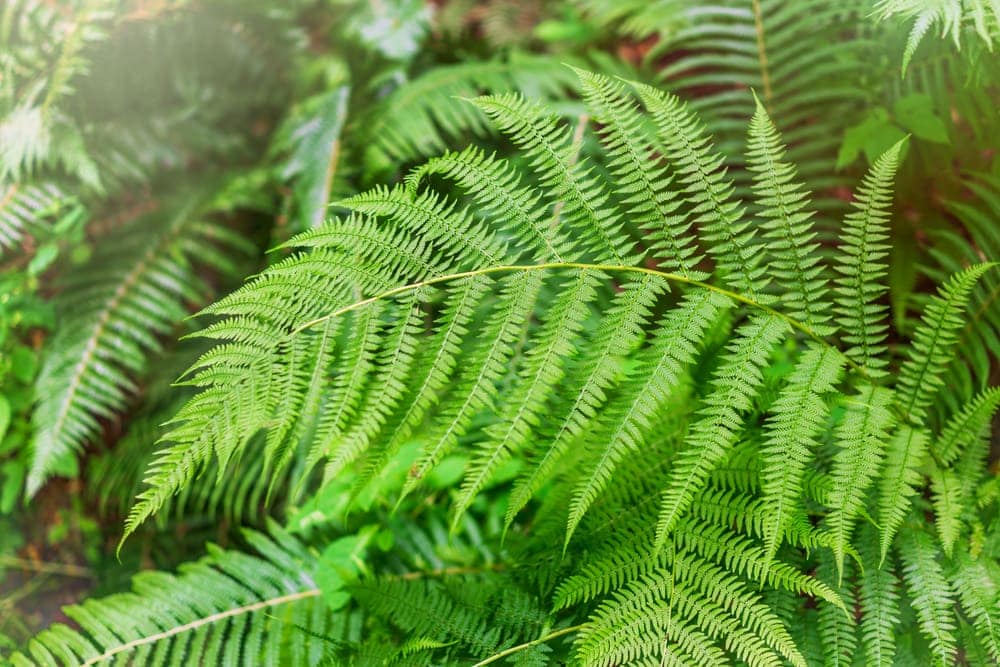
This plant grows in clumps in moist open areas and woodlands across the United States. If a horse ingests these, the absorption of vitamin B1 (thiamin) can lead to neurological impairment. Some of the signs of a B1 deficiency can include uncoordinated, blindness, and depression. Ingesting a few leaves is relatively harmless but with repeated ingestion, the effects can build up over time. If consumption is discovered before the neurological problems are too severe, with treatment horses can recover.
2. Hemlock
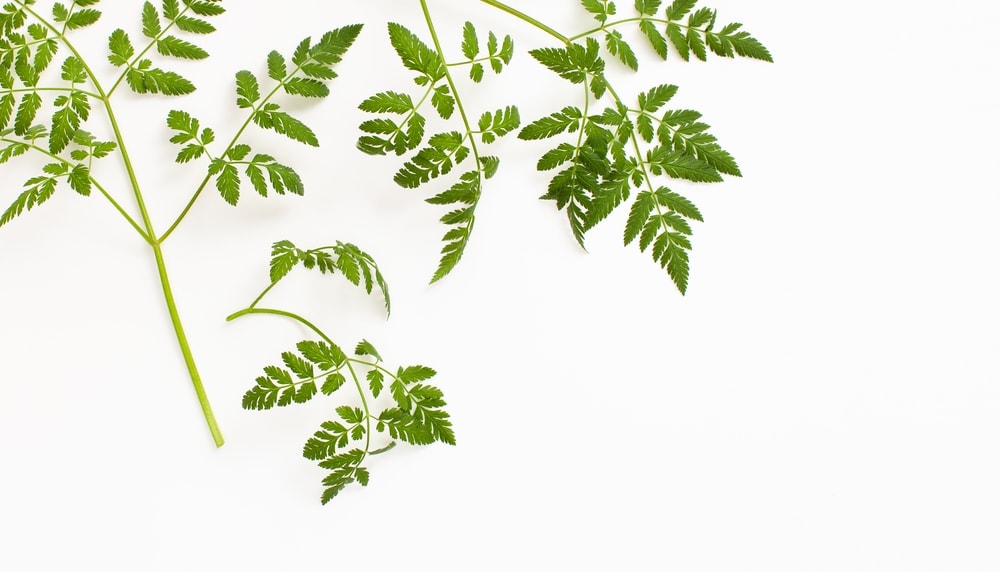
The seeds, leaves, and stems contain several neurotoxins that will affect a horse’s nervous system. It can cause tremors, uncoordinated, and nervousness with one to two hours. Diminished respiratory and heart rates along with depression happening next, and then death. A lethal dose is four to five pounds and there is no treatment. If they ingest a smaller amount, they may recover with supportive care.
3. Tansy Ragwort
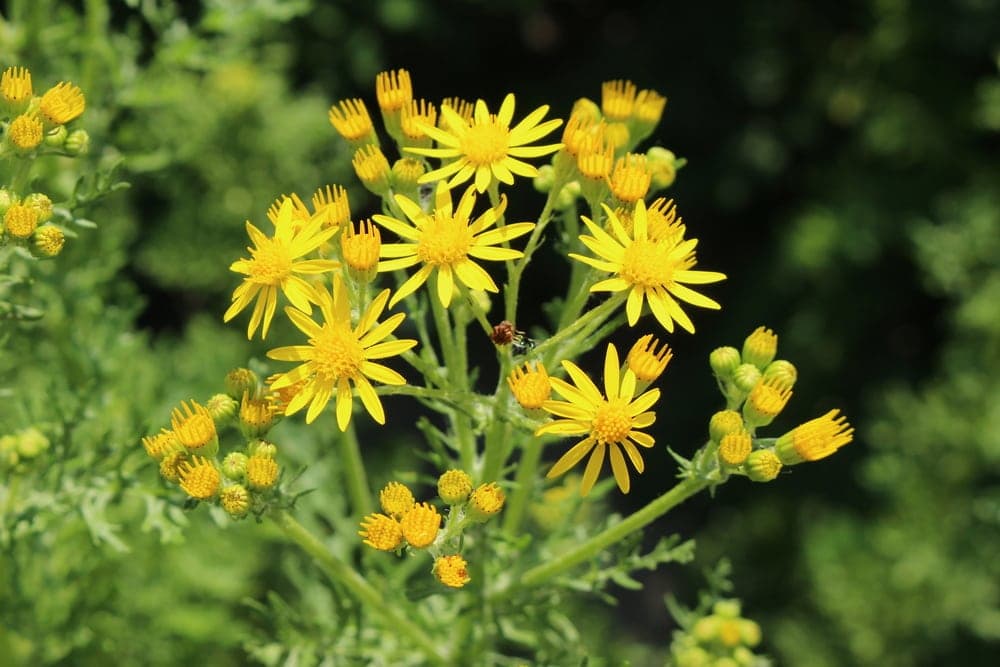
The toxicity levels vary but all are thought to contain pyrrolizidine alkaloids, which inhibit cell division, especially the liver. They may become sensitive to light, weight loss, diminished appetite, and progress to uncoordinated, jaundice, and depressing. If they consume between 50-150 pounds all at once or spread out over time it can cause irreversible, cumulative liver damage.
4. Johnsongrass / Sudan grass

This grows in Southern climates in open, uncultivated areas. Sudan grass is cultivated throughout the United States as a forage crop. The stems and leaves of both kinds of grass contain a cyanide compound. If they ingest healthy adult plants, it is usually harmless to horses
The danger happens if the grasses are damaged through frost, trampling, wilting, etc. This can chemically alter the cyanide in the leaves. It will make them extremely toxic. If the grasses have been over-fertilized, they can accumulate toxic levels of nitrates. If a horse gets cyanide poisoning, it will inhibit their body from absorbing oxygen, leading to death by suffocation.
Some of the symptoms include tremors, frequent urination, rapid breathing, gasping and convulsions, frequent defecation. In the case of mild poisoning, veterinarian treatment can be effective.
5. Locoweed
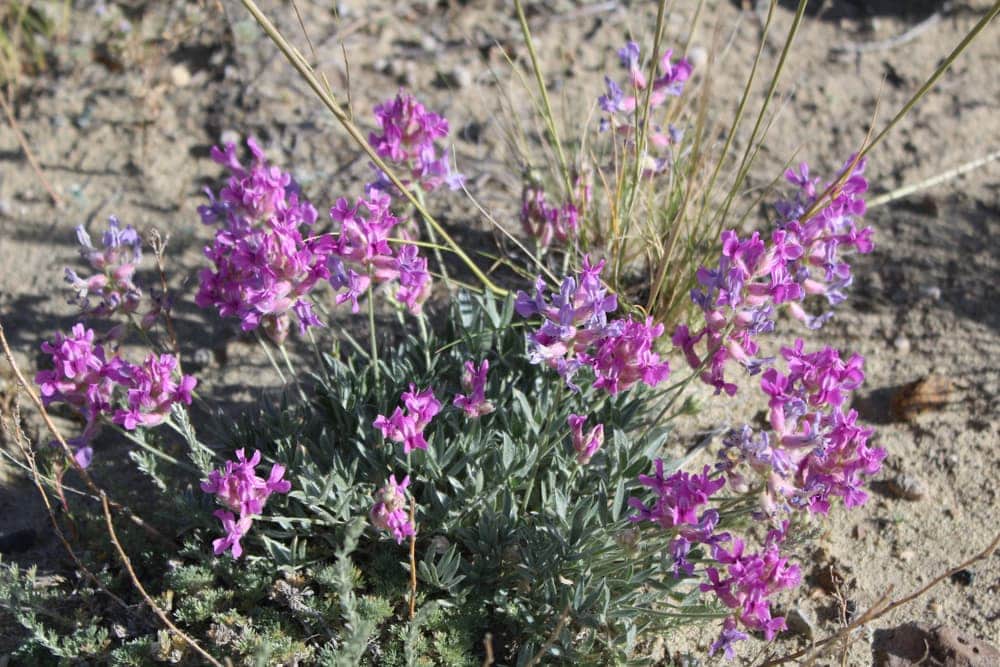
Several toxic species of this plant are grown in different terrains throughout the Southwest and West. They contain swainsonine. When ingested, it disrupts the function of brain cells. They may bob their head, fall over, display an awkward, high-stepping gait, or stagger. For advanced cases, there is no treatment and the effects are not reversible. If they have not been severely poisoned, they may recover if the weed is removed.
6. Oleander

The entire plant contains the toxins nerlin and oleandrin. All they need to eat is 30-40 leaves for it to be deadly. It can cause irregular heartbeats, colic, tremors, and difficulty breathing. The toxins act fast but a horse can survive if they are treated with activated charcoal to inhibit the toxin from being absorbed by the body and medication to stabilize their heart.
7. Red Maple Trees
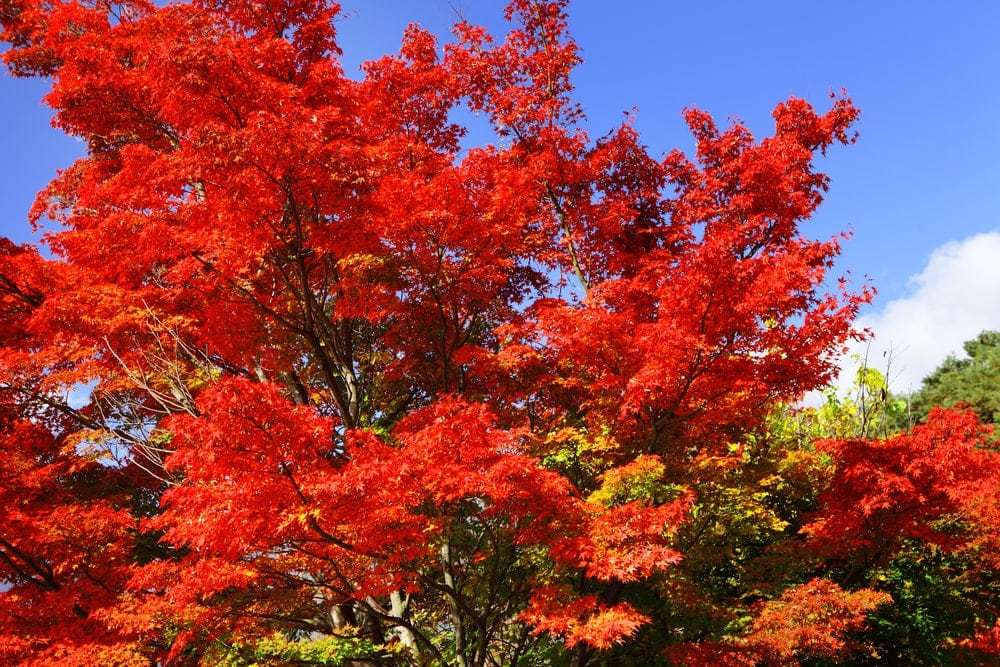
The wilted leaves are what pose a threat to the horse. The toxins will cause the red blood cells to break down and prevent the blood from carrying oxygen. Organ failure or damage may also occur. As little as a pound or two of the leaves can be fatal to a horse.
Signs can include refusal to eat, black or dark-red-brown urine, lethargy, pale mucous membranes, and yellowish gums, rapid heart rate, dehydration, and more. The symptoms can appear with a few hours or take as long as four to five days after a horse eats the leaves. The treatment is massive doses of IV fluids and maybe blood transfusions. Recovery will depend on how many leaves were ingested and how fast they received veterinary care.
8. Water Hemlock

This is one of the most toxic plants in the US and grows in marshy areas. All of the plant is toxic and affect the central nervous system but the root is the most toxic. Less than a pound of the stems and leaves can be fatal. Death from respiratory paralysis follows within two to three hours. Even if a horse survives, they may have permanent damage to their skeletal muscles and heart.
9. Yellow Star Thistle

The plant contains a toxic agent that inhibits the nerves that control chewing. Poisoning is chronic in nature. A chronic dose is 50-200 percent of the weight of the horse over 30-90 days. Some of the symptoms include clenched or tense facial muscles, inability to chew or bite their food effectively, and weight loss. Nerve damage is permanent and there is no treatment. It is recommended you euthanize your horse if they are too debilitated to eat.
10. Yew
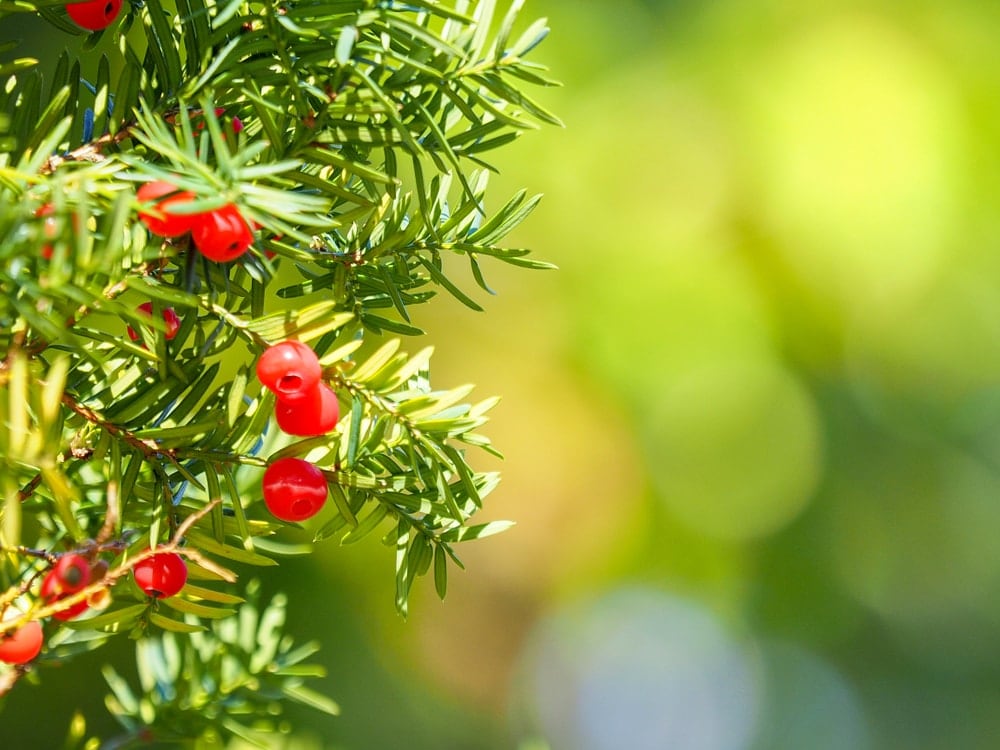
All parts of the Yew plant contain taxine, except for the berries. The alkaloid causes cardiac and respiratory collapse. Even after dried, the leaves remain toxic. A single mouthful can be deadly to the horse within minutes. The most typical sign of ingestion is sudden death. If they are found alive, they may be colicky, have difficulty breathing, with a slowed heart rate. There is no treatment.
Conclusion
- Learning what these plants look like will help to protect your horse when you are taking a ride in an unfamiliar area
- If your horse is not acting right or appears ill, you should contact your veterinarian to have your horse checked out.
- If you are getting ready to use a new field for pasture, make sure that you check it out to see if there is anything that could be harmful or toxic to your horse.


